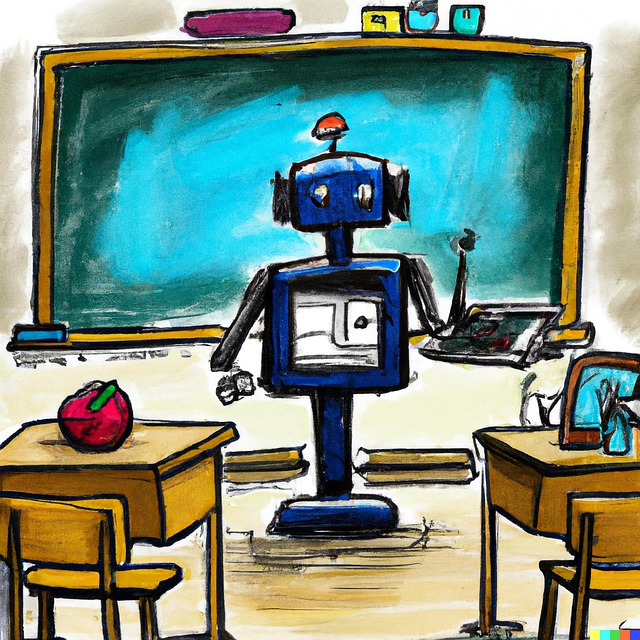# Exploring the Latest Breakthroughs in AI Technology and Their Impact on Our Daily Lives
Artificial Intelligence (AI) has rapidly evolved over the past decade, transforming industries and reshaping how we interact with technology. From healthcare to finance, the latest breakthroughs in AI technology have profound implications for our daily lives. This article delves into the most significant advancements in AI, examining their applications and the potential consequences for society.
## Advancements in Natural Language Processing
Natural Language Processing (NLP) has witnessed remarkable progress, enabling machines to understand and generate human language with unprecedented accuracy. Recent innovations, such as OpenAI’s GPT-4, have pushed the boundaries of what is possible in conversational AI. These models can engage in coherent dialogues, answer complex questions, and even create original content, making them invaluable tools in various sectors.
The implications of these advancements are far-reaching. Businesses are increasingly leveraging NLP for customer service automation, reducing the need for human agents. Chatbots powered by sophisticated NLP algorithms can handle inquiries around the clock, providing instant responses and enhancing customer satisfaction. Moreover, the ability to analyze vast amounts of text data allows organizations to glean insights from customer feedback, social media, and market trends, leading to more informed decision-making.
In education, NLP tools are revolutionizing how students learn. Intelligent tutoring systems can provide personalized feedback and support, adapting to individual learning styles. This tailored approach not only enhances the learning experience but also helps educators identify areas where students may struggle, allowing for timely interventions.
## Breakthroughs in Computer Vision
Computer vision technology has also made significant strides, enabling machines to interpret and understand visual information. Recent advancements in deep learning algorithms have enhanced the accuracy of image and video recognition systems. This progress has opened new avenues in various fields, from healthcare diagnostics to autonomous vehicles.
In the medical field, AI-driven computer vision systems are being utilized to analyze medical images, such as X-rays and MRIs. These systems can identify anomalies with remarkable precision, assisting radiologists in making faster and more accurate diagnoses. As a result, patients benefit from earlier detection of conditions, ultimately improving treatment outcomes.
Autonomous vehicles represent another area where computer vision is playing a transformative role. By integrating advanced image recognition capabilities, self-driving cars can navigate complex environments, recognize pedestrians, and respond to traffic signals. The potential for reducing traffic accidents and improving urban mobility is significant, although ethical and regulatory challenges remain.
Moreover, in the realm of security, computer vision technology is enhancing surveillance systems. AI algorithms can analyze video feeds in real-time, identifying unusual behavior or potential threats. This capability not only bolsters public safety but also raises important questions about privacy and surveillance ethics.
## The Rise of AI in Personalization and Automation
Personalization is another domain where AI has made substantial inroads. Machine learning algorithms analyze user behavior and preferences, enabling companies to deliver tailored experiences. Whether it’s personalized product recommendations on e-commerce platforms or curated content on streaming services, AI is reshaping how we consume information and make purchasing decisions.
Retailers are harnessing AI to optimize inventory management and enhance customer experiences. By predicting demand patterns, businesses can ensure that they have the right products available at the right time, reducing waste and improving profitability. Additionally, AI-driven marketing campaigns can target specific demographics with precision, increasing conversion rates and customer loyalty.
Automation is another critical area impacted by AI advancements. Routine tasks across various industries are being automated, freeing up human workers to focus on more complex and creative endeavors. In manufacturing, for instance, AI-powered robots can perform repetitive tasks with high efficiency, leading to increased productivity and reduced operational costs.
However, the rise of automation raises concerns about job displacement. As AI systems become more capable, there is a growing need for workforce reskilling and upskilling to prepare individuals for the changing job landscape. Policymakers and business leaders must collaborate to ensure that the benefits of AI are distributed equitably and that workers are equipped to thrive in an increasingly automated world.
## Conclusion: Navigating the Future of AI
The latest breakthroughs in AI technology are undeniably reshaping our daily lives, offering both opportunities and challenges. As we embrace these advancements, it is crucial to navigate the ethical, social, and economic implications that accompany them. The potential for AI to enhance efficiency, improve healthcare outcomes, and create personalized experiences is immense. However, it is equally important to address concerns related to privacy, job displacement, and ethical considerations in AI deployment.
Looking ahead, the future of AI holds great promise. Continued investment in research and development will likely yield even more sophisticated technologies, further integrating AI into our lives. As we stand on the brink of this new era, fostering collaboration among technologists, policymakers, and society at large will be essential to harnessing the full potential of AI while mitigating its risks. Embracing this balance will ensure that AI serves as a force for good, enhancing human capabilities and enriching our collective experience.











